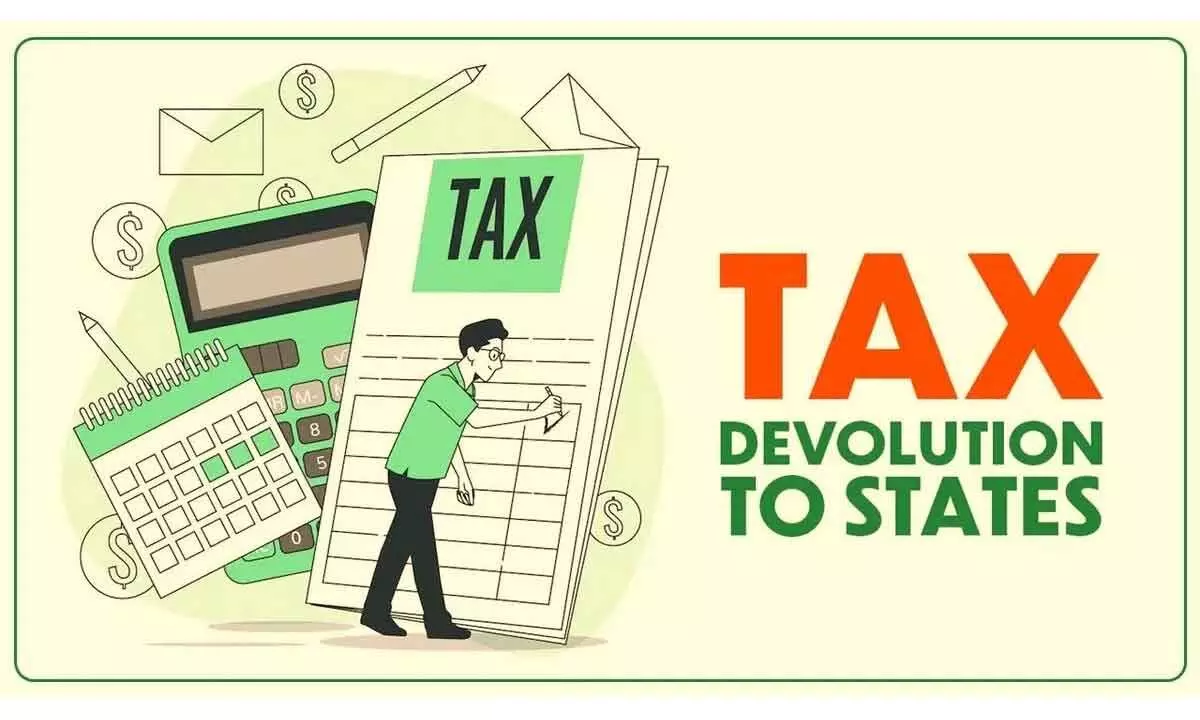GST tax collections’ devolutions trigger North-South divide
India’s gross GST revenue for last month achieved the second-highest collection ever at Rs. 1.78 lakh crore
image for illustrative purpose

The five southern states – Telangana, Andhra Pradesh, Karnataka, Tamil Nadu and Kerala will be getting 15.8 percent as a share of the total allocated amount for devolution for the next fiscal
The GST rates list is so crucial that every Indian business and consumer must know about it. When the GST Council revises GST rates, it hits industries, trade bodies and the end-consumers, impacting the economy. Everyone tends to evaluate their position as a result of this change.
Our HSN-cum-GST rates finder helps you identify the accurate and latest GST rate applicable for the product/service.
The average monthly gross collection for FY2023-24 is ₹1.67 lakh crore, exceeding ₹1.5 lakh crore for FY2022-23. Gross GST collection reaches ₹18.40 lakh crore for FY2023-24, grows 11.7% Y-o-Y and net revenue at ₹1.51 lakh crore is up 13.6% for the month and up by 13% for the year at ₹16.36 lakh crore
The country’s gross Good and Services Tax (GST) revenue for March 2024 jumped by 11.5 per cent over the same month of the previous year, to touch the second-highest collection ever at Rs. 1.78 lakh crore, data released by the Union Finance Ministry showed.
This surge was driven by a significant rise in GST collection from domestic transactions at 17.6 per cent, reflecting the increased level of economic activity during the month. GST revenue net of refunds is Rs 1.65 lakh crore in March which represents a growth of 18.4 per cent over the same month last year.
For the fully financial year 2023-24 the total gross GST collection touched the significant milestone of Rs. 20.14 lakh crore, an 11.7 per cent increase compared to the previous year, according to the official figures.
The central government settled ₹41,856 crore to CGST and ₹35,953 crore to SGST from the IGST collected. This translates to a total revenue of ₹73,641 crore for CGST and ₹75,569 crore for SGST after regular settlement.
GST paid by the taxpayers goes to the central and state governments and acts as a main source of revenue to run the country. In simpler terms, GST money goes to the government for run the country. GST was introduced to simplify the tax processes and bring the unorganized sector into the formal economy. It has eliminated the cascading effect as well as multiplicity of taxes of the previous tax structure. The GST portal has digitized the tax system as activities like registration, refund application and return filing are done online.
Tax devolution refers to the distribution of net proceeds of Union taxes and duties by the Centre to the states, which help them to carry out spending on development, welfare and priority-sector projects and schemes. At present, as per the recommendation of the 15th Finance Commission, 41 per cent of the divisible tax pool of the Centre is transferred to states in 14 installments annually covering the five-year period of 2021-22 to 2025-26.
At the heart of the devolution dispute seemingly lie two major issues. First, the devolution given to states has been significantly lower in the last few years compared to the recommended levels of the 15th Finance Commission. Second, the share of devolution for the less populous and fiscally stronger southern states tends to be lower, while few northern states, which are weaker on these metrics, get a larger share of central taxes.
In FY25, the Union government has budgeted to share 35.5 per cent of the divisible tax pool (gross tax revenues net of cess and surcharges (excluding GST compensation cess) and taxes of Union territories) with states, lower than the suggested 41 percent. Furthermore, the states’ share in central taxes has been trending downwards, averaging 35.4 percent of the divisible pool during FY21-FY25BE, down from 39.8 percent during FY16-FY20, the note added.
The Reserve Bank of India (RBI) in its latest edition of State Finances: A Study of Budgets of 2023-24 released on December 11, 2023, highlighted the same. “Due to increase in cess and surcharges, the divisible pool has shrunk from 88.6 per cent of gross tax revenue in 2011-12 to 78.9 per cent in 2021-22 despite the 10-percentage point increase in tax devolution recommended by the 15th finance panel.”
The central bank suggested that since the actual tax devolution hinges critically on the cess and surcharges levied by the Centre, the states need to augment their own fiscal capacity and reduce dependence on transfers.
The statement showing the state-wise distribution of net proceeds of Union taxes and duties as per the Budget estimates for 2024-25 seemingly makes the impact of this divergence in population apparent. The five southern states – Telangana, Andhra Pradesh, Karnataka, Tamil Nadu and Kerala will be getting 15.8 per cent as a share of the total allocated amount for devolution for the next fiscal. On the other hand, Bihar and Uttar Pradesh account for nearly 28 per cent.

